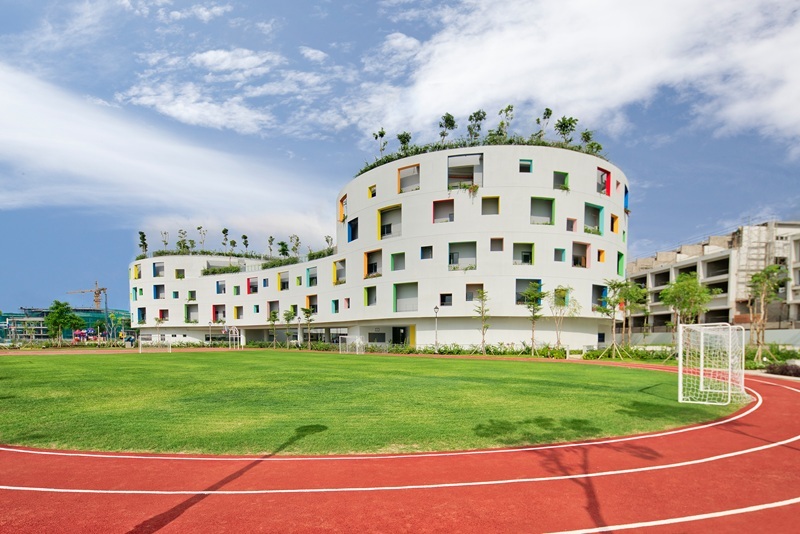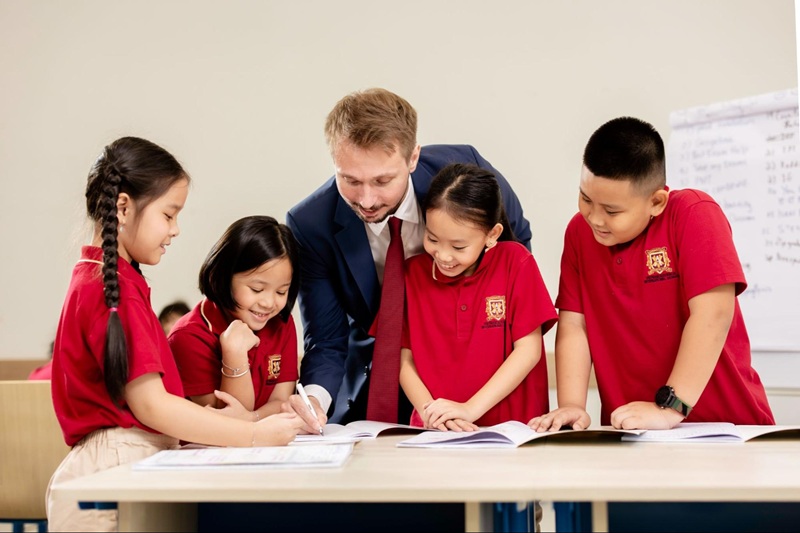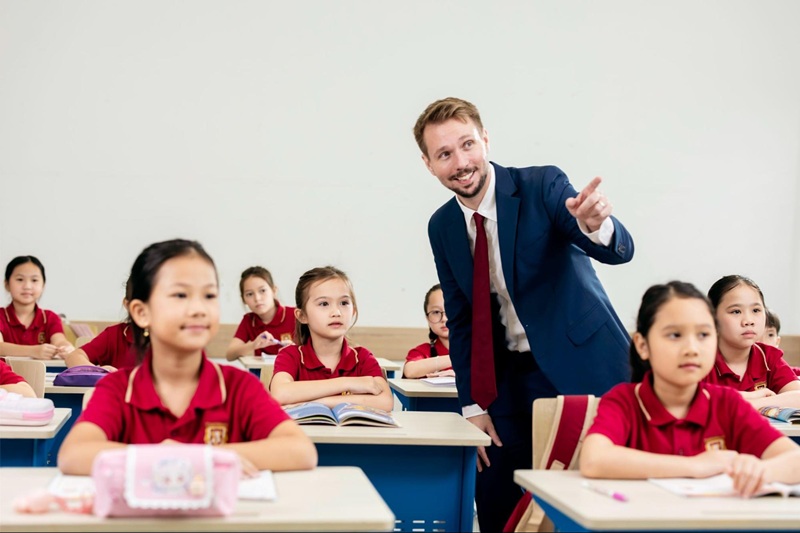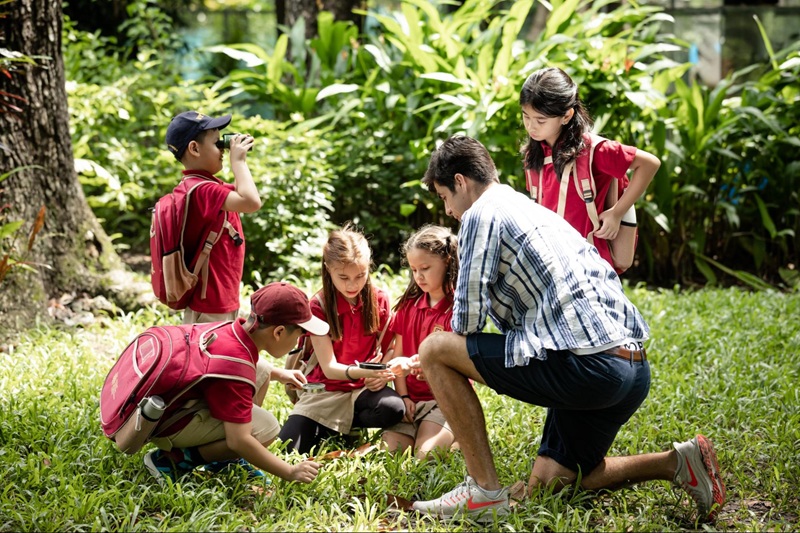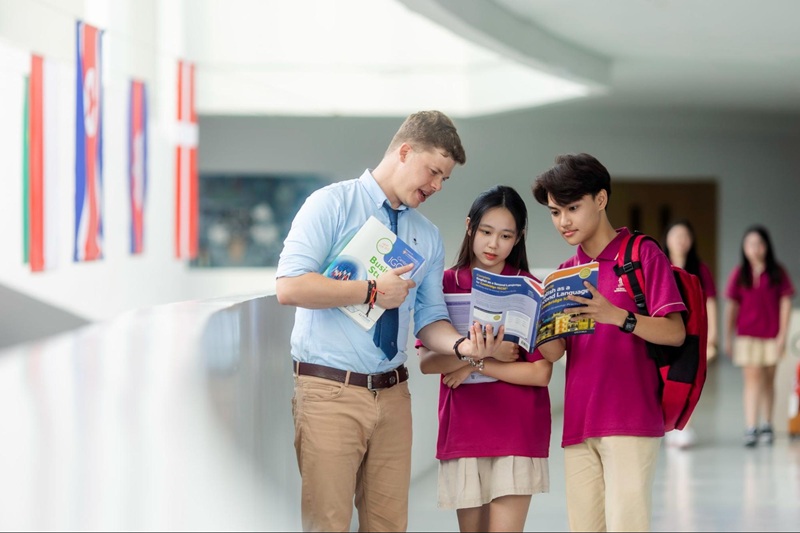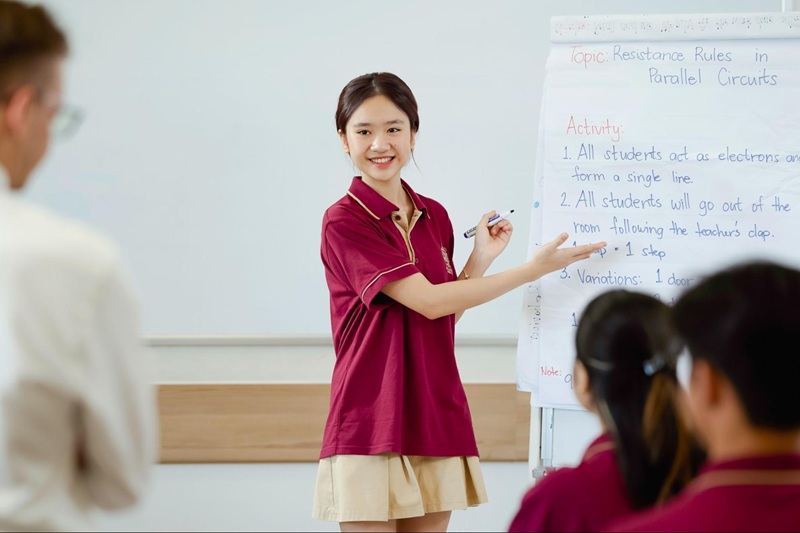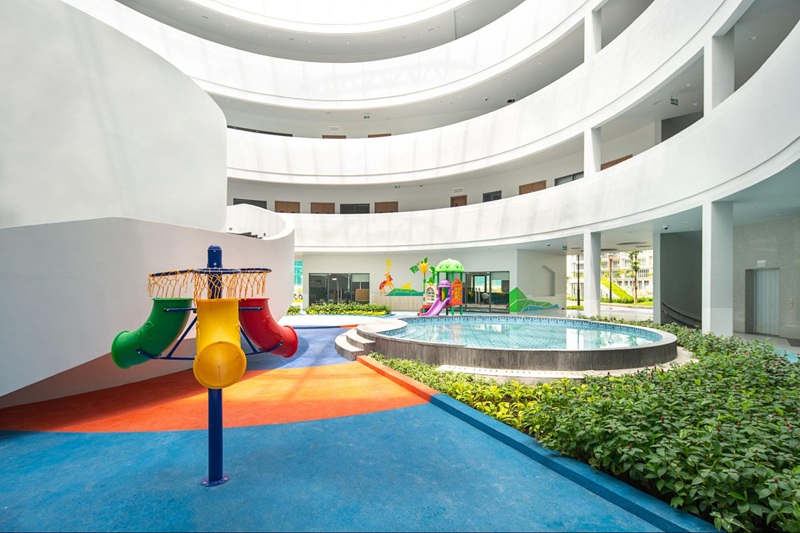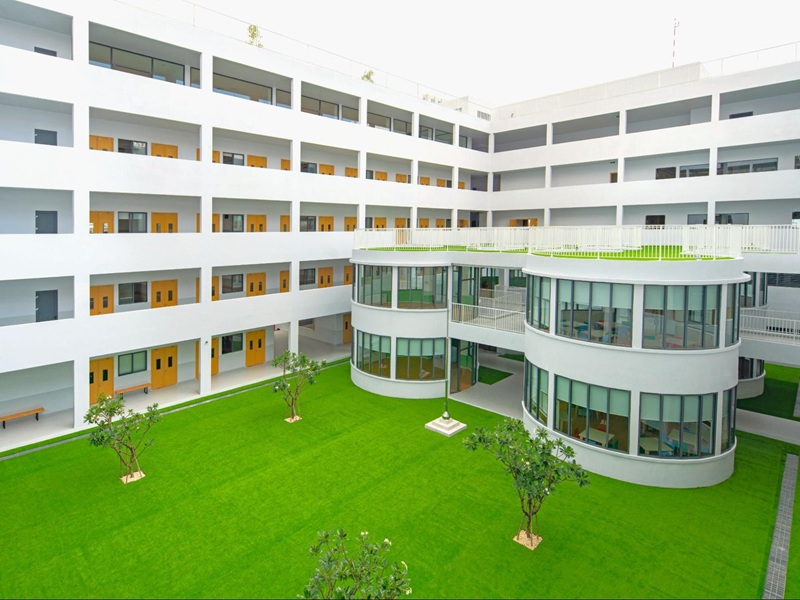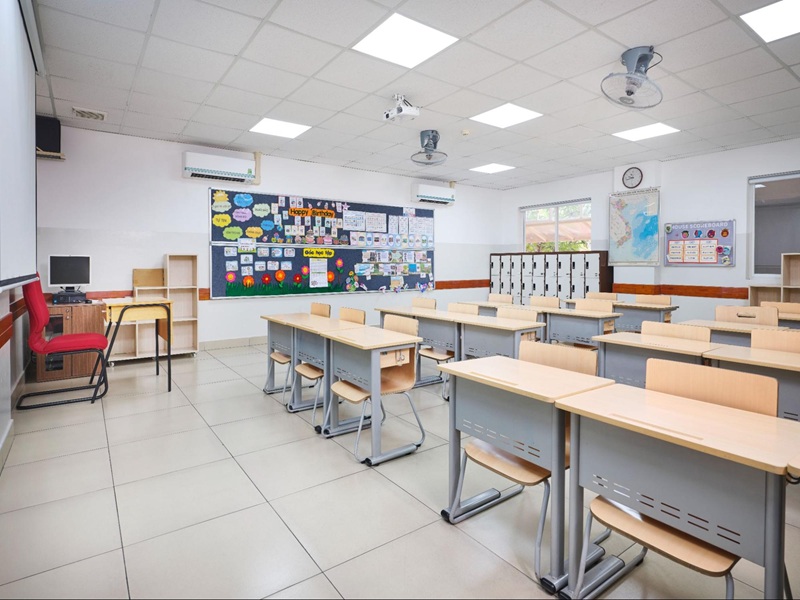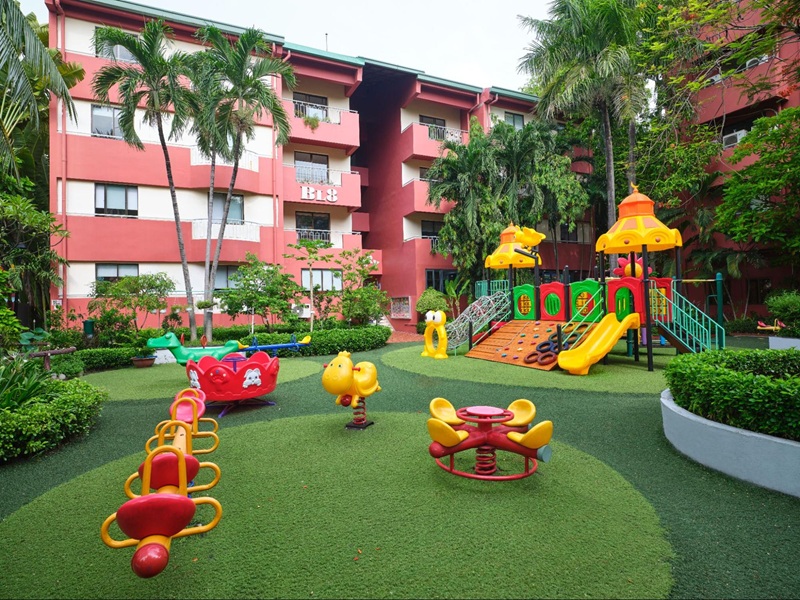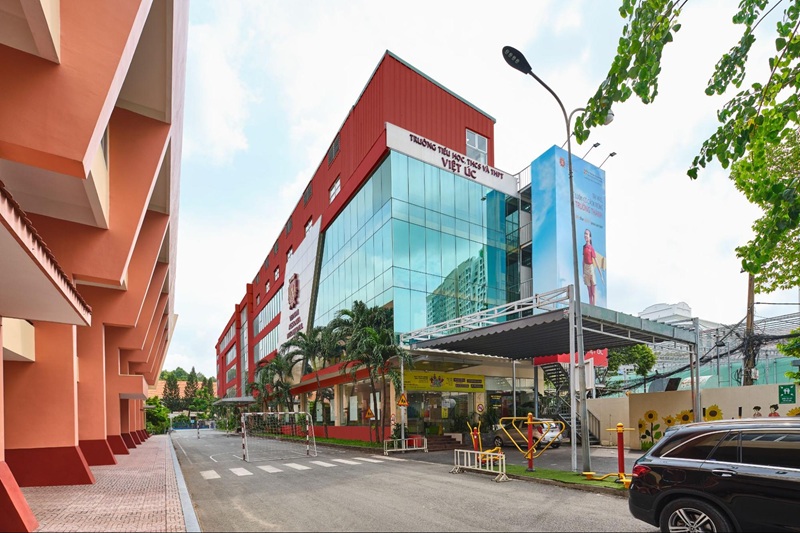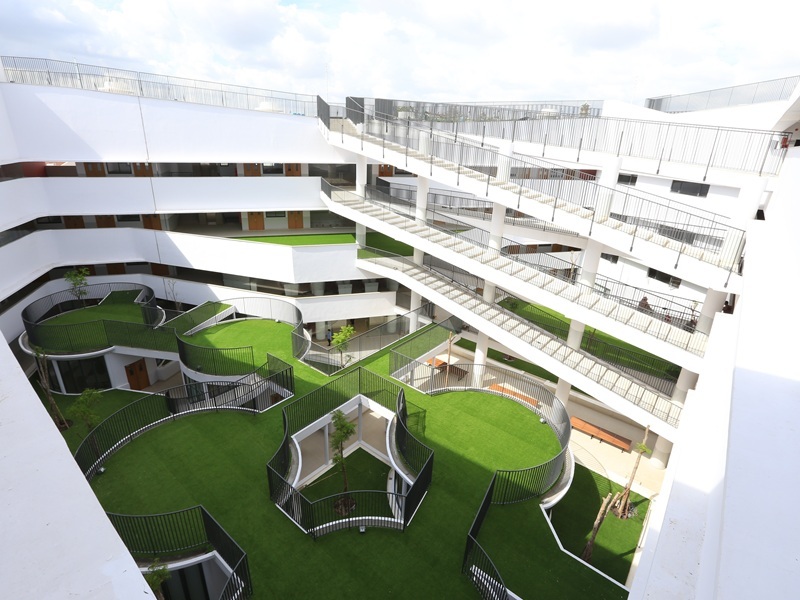Top 20 reasons parents should choose an International Bilingual School in Ho Chi Minh City for their children
- What is an International Bilingual School?
-
Top 20 reasons to choose a Bilingual School in Ho Chi Minh City
- 2.1 Internationally Recognized Curriculum
- 2.2 Globally Recognized Qualifications
- 2.3 International learning experience right in Vietnam
- 2.4 Strong English learning with intensive hours & daily English usage
- 2.5 Preserving national cultural identity alongside international education
- 2.6 More affordable tuition compared to fully international schools
- 2.7 Rich real-world experiences & diverse extracurricular activities
- 2.8 Equipping children with essential life and academic skills
- 2.9 Opportunities to interact, connect, and learn with international peers
- 2.10 Broader knowledge and life experience through exposure to multiple cultures
- 2.11 Solid foundation for future study abroad plans
- 2.12 Expanding future career opportunities
- 2.13 Modern facilities and advanced learning equipment
- 2.14 Developing flexible thinking and creativity
- 2.15 Building confidence and social adaptability in communication & activities
- 2.16 Reducing pressure from grades; focus on holistic development
- 2.17 Smaller class sizes for more personalized teacher attention
- 2.18 Strong interaction and connection between parents, students, and schools
- 2.19 Psychological support, career orientation, and personal growth
- 2.20 Bilingual education helps children easily adapt to international environments
-
List of International Bilingual Schools in Ho Chi Minh City of VAS
- 3.1 International Bilingual Schools – VAS Sala Campus
- 3.2 International Bilingual Schools – VAS Riverside Campus
- 3.3 International Bilingual Schools – VAS Sunrise Campus
- 3.4 International Bilingual Schools – VAS Ba Thang Hai Campus
- 3.5 International Bilingual Schools – VAS Hoang Van Thu Campus
- 3.6 International Bilingual Schools – VAS Garden Hills Campus
- Conclusion
In an increasingly globalized world, education plays a pivotal role in shaping not only a child’s academic success but also their ability to thrive in multicultural environments. For parents in Ho Chi Minh City, choosing the right educational path is no small decision. International bilingual schools have emerged as a powerful choice - offering a perfect blend of local identity and global integration. But what exactly are international bilingual schools, and why are they becoming the go-to option for many families in Vietnam's largest city?
This article uncovers the top 20 compelling reasons why international bilingual schools in Ho Chi Minh City are a smart investment in your child’s future.
1. What is an International Bilingual School?
An International Bilingual School is an educational institution where students are taught in both their native language (Vietnamese) and an international language, most commonly English. This dual-language model is designed to provide students with the best of both worlds - retaining strong cultural roots while gaining the skills and qualifications needed to compete globally.
These schools typically follow a blended curriculum, integrating Vietnam’s Ministry of Education and Training (MOET) standards with internationally recognized programs such as the Cambridge International Curriculum. The goal is to help students develop academic excellence, language fluency, critical thinking skills, and a global mindset - all while nurturing pride in their cultural heritage.
International bilingual schools in Ho Chi Minh City are well invested in modern facilities
2. Top 20 reasons to choose a Bilingual School in Ho Chi Minh City
Let’s explore the most impactful reasons why a growing number of parents in HCMC are choosing bilingual international schools for their children - starting with the first two foundational advantages.
2.1. Internationally Recognized Curriculum
A defining feature of international bilingual schools is their adoption of globally recognized academic programs, such as the Cambridge International Curriculum or IB (International Baccalaureate). These programs are known for their academic rigor, emphasis on inquiry-based learning, and international benchmarking.
In bilingual schools in Ho Chi Minh City, this curriculum is typically offered alongside Vietnam’s national curriculum. This dual approach ensures that students meet both domestic and international education standards, preparing them not only for local university admissions but also for top universities abroad.
Through subjects taught in English such as Math, Science, and Literature, students gain academic vocabulary and discipline-specific knowledge in two languages - boosting cognitive development and long-term academic performance.
A world class curriculum that meets both Vietnamese and international standards
2.2. Globally Recognized Qualifications
Studying at a bilingual school means students are not just learning English - they are working toward globally recognized qualifications. These include certificates such as:
- Cambridge Checkpoint (Primary & Lower Secondary)
- IGCSE (International General Certificate of Secondary Education)
- AS & A Levels
- IELTS and other standardized English proficiency tests
Such qualifications are highly valued by universities and employers around the world, giving students a distinct advantage when applying for international programs or entering the workforce later on. Many bilingual schools are also certified examination centers, which allows students to complete these assessments in a familiar environment, reducing stress and increasing performance.
2.3. International learning experience right in Vietnam
One of the most remarkable advantages of international bilingual schools is that they offer a truly global learning environment - without requiring students to leave Vietnam. Children get to experience the essence of international education through:
- A diverse student body with peers from different cultural backgrounds
- Qualified international and bilingual teachers
- English immersion in academic subjects and daily activities
- Modern teaching methodologies used worldwide
This “study abroad at home” model prepares students for global citizenship by developing language proficiency, cross-cultural understanding, and independent learning skills early on. It provides a strong foundation for students to seamlessly transition to international universities or careers abroad.
2.4. Strong English learning with intensive hours & daily English usage
At the core of bilingual education is English proficiency. Unlike traditional schools that often limit English instruction to a few periods a week, bilingual schools dedicate a significant portion of the curriculum to English-medium instruction.
For example:
- Students may receive 22–36 English lessons per week depending on their chosen academic track (CEP, CAP, or CAPI programs)
- Daily use of English in classes, social interactions, and extracurricular activities strengthens both academic and conversational fluency
This immersion helps students think, speak, and create in English naturally - a critical advantage in higher education and the global workplace. Furthermore, the early and consistent exposure to English helps eliminate language barriers and boosts students’ confidence in international communication.
Bilingual schools in HCMC help students master English through daily immersive learning
2.5. Preserving national cultural identity alongside international education
While international exposure is crucial, preserving Vietnamese values and traditions remains equally important. One of the unique features of bilingual schools in Ho Chi Minh City is their commitment to instilling cultural pride alongside global perspectives.
These schools integrate Vietnamese language, history, literature, and moral education into their daily curriculum. They also celebrate national holidays, traditional festivals, and cultural events - ensuring that students grow up grounded in their national identity.
This dual focus enables students to:
- Appreciate their cultural roots
- Communicate effectively in both English and Vietnamese
- Respect and adapt to different cultures while maintaining a strong sense of self
2.6. More affordable tuition compared to fully international schools
For many families, cost is a major consideration when choosing a school. Bilingual schools offer a cost-effective alternative to full international schools, providing access to a high-quality international education at a significantly lower tuition rate.
This affordability does not mean compromising on quality. Parents still benefit from:
- Qualified international and Vietnamese teachers
- Cambridge-accredited curricula and recognized diplomas
- State-of-the-art facilities
- Personalized student support
In addition, many bilingual schools offer financial aid, early enrollment discounts, and scholarships, making it more feasible for middle-class families to invest in a future-proof education for their children.
>>> Read more: Explore the Cambridge International Programme and everything you need to know!
2.7. Rich real-world experiences & diverse extracurricular activities
Bilingual schools in Ho Chi Minh City recognize that learning goes beyond textbooks. They offer a wide range of real-world learning opportunities and extracurricular programs that contribute to a well-rounded development.
Students are encouraged to participate in:
- Academic competitions (Olympiads, debates, STEM fairs)
- Arts and performance events (music, painting, theater)
- Sports clubs and tournaments
- Community service and charity projects
- Field trips and cultural exchange programs
These activities cultivate essential life values such as teamwork, leadership, empathy, and resilience. They also help students explore and develop their interests and talents from a young age - building a personal profile that stands out in both university and job applications.
Bilingual schools offer diverse extracurriculars that build real-world skills
2.8. Equipping children with essential life and academic skills
Beyond academic success, bilingual schools are committed to nurturing a complete skill set that prepares students for modern life challenges. Through integrated learning and practical experiences, students gain a broad array of life skills, including:
- Critical thinking and problem-solving
- Self-study and research abilities
- Time management and self-discipline
- Effective communication and teamwork
- Technology literacy and responsible internet use
- Emotional intelligence and stress management
These schools also place strong emphasis on presentation and public speaking, enabling students to express ideas confidently. As a result, students become more independent, resilient, and capable of adapting to different learning and living environments - locally or globally.
2.9. Opportunities to interact, connect, and learn with international peers
Bilingual schools create a multicultural environment where students have daily opportunities to engage with peers and educators from various countries. This exposure broadens their worldviews and helps them learn how to navigate diversity effectively.
Students regularly:
- Participate in group projects with international classmates
- Interact with teachers from different educational backgrounds
- Join global events such as Model United Nations (MUN), student exchanges, and virtual collaborations
Such experiences foster open-mindedness, empathy, and global awareness - soft skills that are increasingly valuable in the interconnected world of higher education and employment.
2.10. Broader knowledge and life experience through exposure to multiple cultures
Cultural diversity is not just a background feature in bilingual schools - it’s part of the learning itself. From early grades, students are introduced to a variety of world cultures, languages, and perspectives. This broadens their thinking and encourages curiosity.
They gain insights into:
- Different customs, traditions, and worldviews
- Social norms and etiquette across countries
- Current global issues and how they are perceived internationally
By engaging with diverse cultures, students become more culturally competent, respectful, and informed. This knowledge serves as a strong foundation for future international travel, study abroad programs, and global careers.
2.11. Solid foundation for future study abroad plans
One of the most strategic advantages of bilingual schools is their ability to provide a seamless pathway to overseas education. With an internationally aligned curriculum and globally recognized qualifications, students are academically prepared for universities around the world.
Moreover, bilingual schools often offer:
- Study abroad orientation workshops
- University counseling services
- Personalized academic roadmaps tailored to each student's study destination
- Opportunities to attend seminars with representatives from top universities in countries like the UK, Australia, the US, and Canada
These preparations help students and families navigate application processes confidently, increasing the chances of securing scholarships and admissions to prestigious global institutions.
Studying at a bilingual school helps build a solid foundation for overseas education
2.12. Expanding future career opportunities
In today’s competitive global job market, bilingualism and international exposure are key differentiators. Bilingual schools nurture both, enabling students to:
- Communicate fluently in English and Vietnamese
- Develop soft skills needed for modern workplaces
- Understand global trends and workplace dynamics
Additionally, students gain early exposure to subjects like business, economics, and global studies, which are essential for careers in management, finance, diplomacy, and technology. This makes graduates of bilingual schools more versatile and globally employable.
2.13. Modern facilities and advanced learning equipment
A high-quality learning environment requires more than good teachers and curricula - it needs state-of-the-art facilities that support 21st-century education. Most bilingual schools in Ho Chi Minh City are equipped with:
- Smart classrooms with interactive whiteboards and audio-visual systems
- Science labs, libraries, art and music studios
- Indoor and outdoor sports areas (e.g., swimming pools, football fields, basketball courts)
- Well-ventilated and sanitized spaces promoting student health and safety
These facilities not only enhance learning outcomes, but also ensure students have a comfortable, engaging, and safe place to develop their skills.
2.14. Developing flexible thinking and creativity
Bilingual education naturally encourages students to think beyond conventional boundaries. Learning subjects in two languages stimulates the brain, enhancing:
- Analytical and lateral thinking
- Creative expression through arts and innovation
- Adaptability in solving unfamiliar problems
Activities like coding, design thinking, and debate clubs offered by these schools further boost students' capacity to think critically and inventively - traits highly valued in the digital era.
2.15. Building confidence and social adaptability in communication & activities
From daily interactions in English to active participation in events, bilingual schools are ideal environments for students to build self-confidence and social agility.
Students are encouraged to:
- Speak up during lessons
- Take on leadership roles in group projects or student councils
- Perform on stage during talent shows, debates, and school festivals
These experiences empower students to become assertive, well-spoken, and emotionally intelligent individuals who are comfortable in diverse social settings.
Studying at a bilingual school helps students build confidence and communication skills
2.16. Reducing pressure from grades; focus on holistic development
Unlike traditional education systems that overly emphasize scores and rankings, bilingual schools promote balanced development. Academic excellence is encouraged, but not at the expense of mental health or personal growth.
Key benefits include:
- Emphasis on growth mindset rather than just results
- Project-based learning and portfolio assessments
- Continuous support for emotional well-being
Students are thus motivated to learn for understanding, not just for grades - developing a healthier attitude towards education.
2.17. Smaller class sizes for more personalized teacher attention
With an average class size of 20–25 students, bilingual schools can offer more individualized attention and student-teacher engagement. This structure allows for:
- Customized lesson plans
- Timely feedback and academic support
- Stronger relationships between students and educators
It creates a nurturing and inclusive environment where each student feels seen, heard, and supported in their learning journey.
2.18. Strong interaction and connection between parents, students, and schools
Family involvement is a key pillar of bilingual education. These schools actively engage parents as partners in their child’s development through:
- Regular progress updates and parent-teacher meetings
- Parent workshops on child psychology, learning strategies, etc.
- Involvement in school events and student recognition programs
This triangular collaboration ensures that learning continues both at school and at home, reinforcing student growth holistically.
2.19. Psychological support, career orientation, and personal growth
To address the varied needs of students, bilingual schools provide robust counseling and career guidance services. These services help students to:
- Explore personal interests and strengths
- Set academic and professional goals
- Manage stress and mental health challenges
- Navigate peer pressure and adolescent transitions
Career orientation programs also introduce students to different industries and career paths, helping them make informed choices for their futures.
2.20. Bilingual education helps children easily adapt to international environments
Ultimately, the greatest strength of bilingual schools is their ability to prepare students for the world. Graduates of these programs often display:
- Linguistic agility: the ability to switch between languages fluidly
- Cultural empathy: the sensitivity to understand and respect differences
- Adaptability: the capability to thrive in unfamiliar environments
Whether students choose to study abroad, work in multinational companies, or become global entrepreneurs, they carry with them the adaptability and confidence to succeed anywhere.
>>> Read more: Essential tips for choosing international schools that parents need to know today!
3. List of International Bilingual Schools in Ho Chi Minh City of VAS
To meet the growing demand for international-standard bilingual education, Vietnam Australia International School (VAS) has established a strong network of campuses across Ho Chi Minh City. Each campus is thoughtfully developed with modern infrastructure, international-standard programs, and a nurturing academic environment - making VAS one of the most trusted bilingual education systems in Vietnam.
Let’s explore each VAS campus and what makes them unique:
3.1. International Bilingual Schools – VAS Sala Campus
VAS Sala is one of the flagship campuses, offering a premium learning environment right in the heart of the new urban area. With its eco-friendly design, modern facilities, and full range of academic levels, the campus provides an ideal space for students to grow academically and personally in an international bilingual setting.
VAS Sala Campus – a leading bilingual school in Ho Chi Minh City with eco-friendly design
- Address: Sala Urban Area, 1 Bui Thien Ngo Street, An Khanh Ward, HCMC
(Former address: 1 Bui Thien Ngo Street, Thu Duc City)
- Phone: (028) 3622 0833
- Email: info.sl@vas.edu.vn
- Website: Sala Campus - VAS
3.2. International Bilingual Schools – VAS Riverside Campus
Located in the vibrant District 7, VAS Riverside is known for its expansive learning spaces and dynamic extracurricular activities. The campus emphasizes academic excellence while nurturing students’ physical, artistic, and emotional development through a well-rounded bilingual curriculum.
VAS Riverside Campus offers dynamic learning spaces and rich bilingual programs
- Address: 99 Nguyen Thi Thap Street, Tan My Ward, HCMC
(Former address: 99 Nguyen Thi Thap, Tan Phu Ward, District 7)
- Phone: (028) 3622 0898
- Email: info.rs@vas.edu.vn
- Website: Riverside Campus - VAS
3.3. International Bilingual Schools – VAS Sunrise Campus
VAS Sunrise Campus features modern classrooms, advanced technology, and creative learning zones. It caters to students from kindergarten to high school, providing tailored pathways (CEP, CAP, CAPI) to suit different learning goals and abilities.
VAS Sunrise Campus combines technology and bilingual pathways for every learner
- Address: 1 Street 20, Him Lam Area, Tan Hung Ward, HCMC
(Former address: No. 1, Street 20, Him Lam, District 7)
- Phone: (028) 3622 6611
- Email: info.sur@vas.edu.vn
- Website: Sunrise Campus - VAS
3.4. International Bilingual Schools – VAS Ba Thang Hai Campus
As one of the longest-established campuses, VAS Ba Thang Hai is centrally located and well-regarded for its academic discipline and active student community. The campus is equipped with specialized learning rooms and extracurricular zones that support both academics and holistic growth.
VAS Ba Thang Hai – a central bilingual campus known for academic excellence
- Address: 594 Ba Thang Hai Street, Dien Hong Ward, HCMC
(Former address: 594 Ba Thang Hai Street, Ward 14, District 10)
- Phone: (028) 3864 1770
- Email: info.bth@vas.edu.vn
- Website: Ba Thang Hai Campus - VAS
3.5. International Bilingual Schools – VAS Hoang Van Thu Campus
VAS Hoang Van Thu campus boasts a strategic location and a vibrant educational community. Known for its innovative teaching methods and focus on individual growth, it serves as an ideal environment for students to develop critical thinking and global awareness.
VAS Hoang Van Thu fosters innovative learning and global awareness
- Address: 202 Hoang Van Thu Street, Duc Nhuan Ward, HCMC
(Former address: 202 Hoang Van Thu, Phu Nhuan District)
- Phone: (028) 3999 0112
- Email: info.hvt@vas.edu.vn
- Website: Hoang Van Thu Campus - VAS
3.6. International Bilingual Schools – VAS Garden Hills Campus
Set in the green and spacious area of Go Vap District, VAS Garden Hills offers a calm and inspiring setting for students. The campus places great emphasis on environmental awareness, creativity, and character building - making it a nurturing place for young learners.
VAS Garden Hills offers a green, inspiring bilingual learning environment
- Address: 168 Phan Van Tri Street, An Nhon Ward, HCMC
(Former address: 168 Phan Van Tri, Go Vap District)
- Phone: (028) 3588 3088
- Email: info.gh@vas.edu.vn
- Website: Garden Hills Campus - VAS
>>> Read more: Explore detailed VAS international school tuition fees by education level
Conclusion
Choosing the right school for your child is one of the most important decisions a parent can make. International bilingual schools in Ho Chi Minh City offer a well-balanced education that nurtures academic excellence, personal growth, cultural pride, and global readiness.
From internationally recognized programs and intensive English instruction to strong cultural values and cutting-edge facilities, these schools provide the ideal environment for raising well-rounded, future-ready individuals.
For parents who want their children to be competitive on a global stage - without sacrificing their Vietnamese identity - bilingual education is not just a choice. It is a forward-thinking investment in their future.
>>> Read more: List of the 21 best bilingual international schools in Ho Chi Minh City
